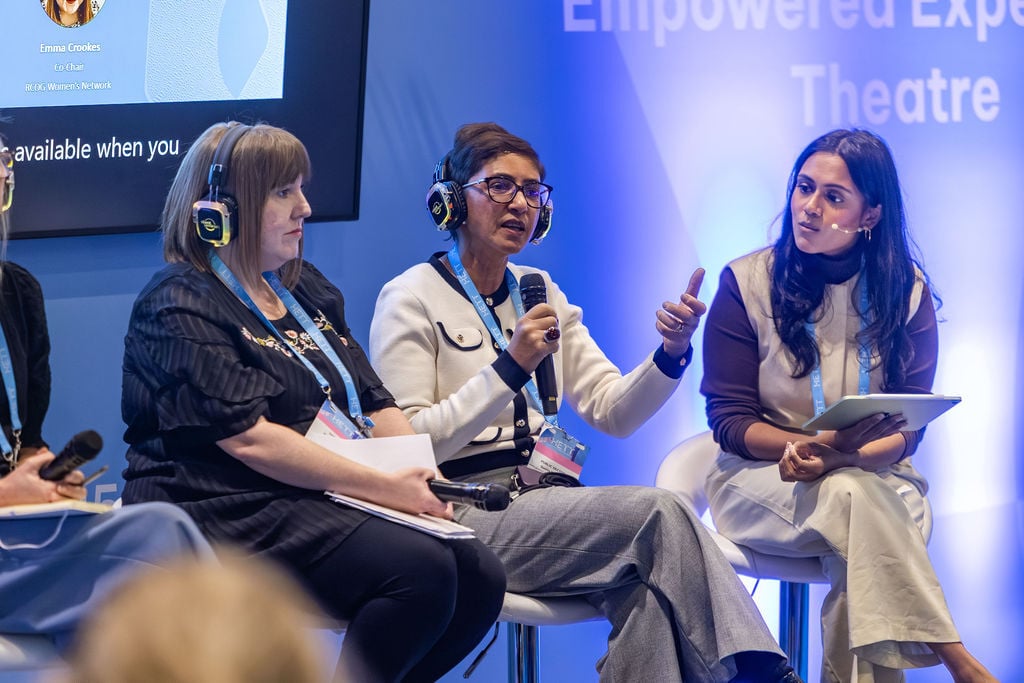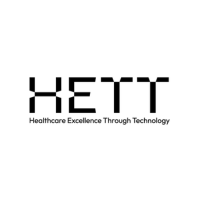Chaired by Sujitha Selvarajah, HealthTech Founder, Obstetrics and Gynaecology Registrar, and Health Equity Specialist at Hesta Health, this HETT Show session brought together a panel of leaders passionate about transforming maternity care through innovation and inclusion. The discussion featured Emma Crookes, Jules Gudgeon, and Sunita Sharma.
Opening the session, Sujitha acknowledged the ongoing challenges facing maternity services. Despite frequent headlines about crises and failings, she reminded the audience that “the UK remains one of the safest places in the entire world to have a baby.” There was still, however, “quite a lot of room for change.”
She invited each panellist to share examples of projects offering hope and demonstrating how technology and patient voice can improve service design, education, and safety in maternity care.
Harnessing Technology for Postnatal Care
Sunita Sharma began by reflecting on her 30-year career in obstetrics and gynaecology and her optimism about the future. “I feel most optimistic of improvements of our learning translating into frontline care now than ever before because we have tools now and the learning to take us along.”
She described leading the Postnatal Digital Suite, a co-designed initiative that brought together everyone involved in postnatal ward care. “Using the technology to help us where no man and woman have gone before in driving improvements in postnatal care,” she said.
The Pandemic and the Rise of Patient Voice
Emma Crookes then spoke about how the COVID-19 pandemic reshaped engagement with patients and service users. When she first became a patient representative in 2018, she explained, “I would be rolled out at a meeting every three months to share my experience.” But once meetings moved online, “that is when we could get more strategic and get really involved in that decision making and that design.”
She described the shift as transformative for the patient voice, helping to ensure that service design became more inclusive. “It’s really important that we take everybody with us regardless of background,” she said, emphasising that equity must underpin innovation.
Data and Digital Infrastructure
The discussion turned to the single patient record, a project that excited Jules Gudgeon, National Chief Midwifery Information Officer at NHS England. “They’re starting in maternity, which is absolutely fantastic because maternity’s always sidelined,” she said. “But they’re not doing that this time. Maternity is at the beginning of this journey and everyone will learn from us.”
This, she explained, represents a major cultural shift: recognising maternity services not as an afterthought but as a foundation for wider digital transformation across the NHS.
Embedding Equity in Service Design
The panel discussed the risks of designing maternity services that only serve a narrow demographic. Emma Crookes observed that the NHS “is very good at creating policies and procedures for white women that speak English,” but this approach leaves others behind. “Instead of translating a leaflet into ten languages and congratulating ourselves because we’ve done that, we need to go further than that.”
Technology, artificial intelligence, and better data could all help close these gaps if designed inclusively from the start. “It’s about creating those trusting relationships with different groups of people,” Emma said, “not leaving them behind.” 
The Power of Co-Design
The conversation returned to Sunita Sharma, who shared the evolution of the Mum & Baby App. She admitted, “The first version of the app was me thinking I know the solution.” Initially designed to overcome the problem of paper leaflets running out on postnatal wards, the app provided a digital source of information. But real learning came later, through direct engagement with users.
A father’s comment “what about me?”, prompted her to rethink the app entirely. “Co-design and taking everybody along is so vital because you just need one person’s experience that can inform you so much,” she said. The project expanded to include partners, diverse families, and community input, showing how lived experiences can redefine design priorities.
Tackling the Digital Divide
Jules described an initiative to ensure no woman or family was excluded from digital innovations because of access barriers. “Risk isn’t the technology, the risk is exclusion,” she said. Working with the Good Things Foundation, her team provided recycled devices and data-loaded SIM cards to those without internet access.
“What started with a £7,000 budget now supports 72 hubs across England,” she explained, illustrating how small-scale projects can make a large national impact. By addressing digital exclusion, this initiative ensured that technology could empower rather than divide.
Measuring What Works
As discussion turned to sustainability, Jules emphasised the need for better evaluation. “We’re really good at identifying a problem and coming up with a solution… but we’ve got to get better at measuring what works.”
Capturing impact was not just an academic exercise, but essential for scaling and sustaining change. Emma added that demonstrating tangible benefits helps secure funding, referencing the RCOG Green Maternity Challenge, where projects that showed measurable outcomes were able to continue beyond pilot stages.
Making Data Part of Everyday Practice
Returning to the role of data, Sunita spoke about embedding data collection into day-to-day care. “The technology enabled us to collect the data. It wasn’t that there was somebody designated to collect it,” she explained. “That’s really crucial, that the data becomes part of business as usual.”
She described how initiatives like the single patient record and electronic health systems could make data more accessible and actionable. “We have the strength now,” she said. “Our technology is going to be an enabler in getting the information we need by working together from different sectors.”
Standardising Communication Across Care Pathways
Another important area of focus was communication across the maternity pathway. Sunita explained, “The pathway needs to connect the people along the journey because health visitors come into antenatal care and then again later with poor information flow.”
To address this, teams in North London worked to standardise discharge summaries from maternity units to community teams. “We wanted to take away the inconsistency and bring in evidence-based information that’s guiding clinical care.” Through co-design, they tailored documents to the needs of specific professionals, ensuring relevant and accessible information for every role.
Learning from Other Industries
The panel reflected on how healthcare can learn from sectors like retail and finance. As Sunita put it, “In healthcare and in the NHS, we are decades behind and we put on a different hat when we come to work versus what we expect with banking and Amazon.”
That mindset shift, they agreed, is crucial for driving innovation and improving patient experience. As Sujitha noted, cross-industry learning is essential if the NHS is to provide maternity care that meets modern expectations.
Closing Reflections
In the final moments, Sujitha invited the panel to share one piece of advice for the audience.
“Use your voice,” said Jules. “You are all here because you’re interested in digital technology. Use your voice, contribute to the art of possible.”
Sunita added, “Maternity touches everybody, our own existence, our family, and close ones. Please contribute in however little way you can. Keeping the human experience at the core of what we do has a lot to contribute.”
The discussion ended with a reminder that every story matters. “When I do the postnatal clinic, I hear experiences, and that story guides us all, motivates us all.”
The panel’s conversation made clear that improving maternity services requires more than technological upgrades, it demands empathy, co-design, and accountability. Whether through digital inclusion projects, unified records, or patient-led app development, technology must serve as a bridge rather than a barrier.
As the panellists concluded, the path forward depends on collaboration between clinicians, technologists, and service users, each using their voice to shape safer, smarter, and more inclusive maternity care.
Join us at our upcoming event, HETT Leaders Summit on 12th February at Royal Armouries, Leeds. Register for free below.
%20(1).png?width=500&height=58&name=HETT%20insights%20logo%20RGB-04%20(1)%20(1).png)



